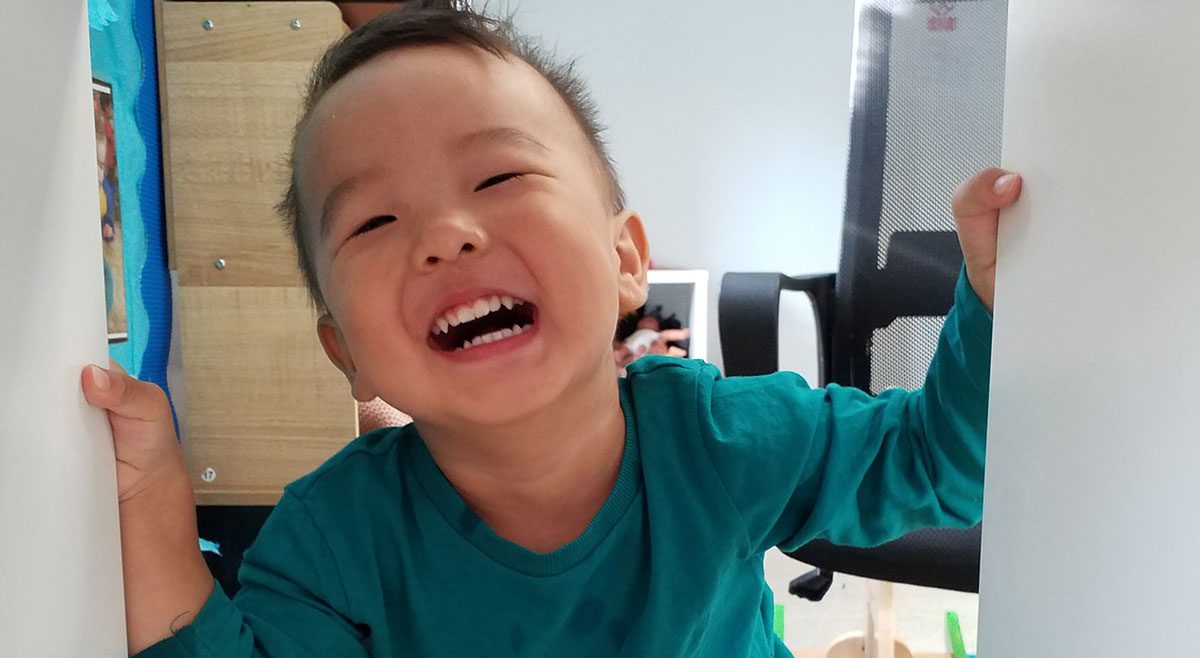Written by Genevieve
Bilingualism refers to the ability to use two languages in everyday life and is on the rise in many parts of the world, with one in three people being bilingual or multilingual.*
One misunderstood pattern, which is often taken as evidence for the confusion of a language, is when bilingual children mix words from two languages in the same sentence. This is known as code-mixing. Code mixing is a normal part of bilingual development. One reason some children code mix is that it happens frequently in their home language and the children are mirroring what they hear adults around them do (Comeau, Genesee, & Lapaquette, 2003). However, rather than being a sign of confusion, code-mixing can be seen as a sign of bilingual children’s ingenuity.
One popular strategy for raising bilingual children is the “one-person-one-language,” a strategy that was first recommended over 100 years ago (Ronjat, 1913). Research by (Barron-Hauwaert, 2004), has shown that a one-person-one-language approach can lead to the successful acquisition of the two languages but that it does not necessarily lead to the successful acquisition of the two languages.
Several other factors have proven to be important to early bilingual development. These factors might lead some families to use a one-person-one-language strategy, and other families to use others. It is important to remember that children learn language through listening and interacting with different speakers. What is paramount is children’s frequent exposure to the sounds, words, and grammar of the languages that they will use. It is a combination of both quality and quantity.
Quantity can be measured by the number of words that children hear per day in each language. The quantity of early exposure has a profound effect on the child’s language acquisition. Here at Willows Colliers Wood, there is a variation of languages spoken by the Team and we are here to support your child to embrace their their own language and have a solidified comprehension of the English language too. Our parents and children recognise that their languages are valued. Alongside our environment where we have books in different languages, our diverse food menu and celebrations that take place whilst we learn about our children’s cultures. Whilst the English language learning is developed inside the setting and will be associated with the Teachers, our settling-in process is thorough. During the process, we find out about the languages spoken by the parents and we also learn keywords too such as daily greetings to support and encourage a ‘home-from-home’ experience.
You may be worried that your bilingual child will be reluctant to speak in English but from our experience, our children need time and space to settle into a new environment. We support them through nurturing their Personal, social, and emotional development and using play and their interests to engage them with nonverbal gestures such as using Makaton and objects of reference, to help break down any barriers. Also, the key is repetition and consistency. For example, singing popular nursery rhymes and reading books daily and role-modelling keywords and phrases. So don’t despair and don’t compare your child to another peer!! We value that each of our children is unique, and it’ll only be a matter of time before your child will surprise you with how much they’ve acquired their languages!
References:
*Wei L. Dimensions of Bilingualism. In: Wei L, editor. The Bilingualism reader. New York: Routledge; 2000.
Comeau L, Genesee F, Lapaquette L. The modelling hypothesis and child bilingual codemixing. International Journal of Bilingualism. 2003;7(2):113–126.
Ronjat J. Le développement du language observé chez un enfant bilingue. Paris: Champion; 1913
Barron-Hauwaert S. Language strategies for bilingual families: The one-parent-one-language approach. Clevedon, UK: Multilingual Matters; 2004.


